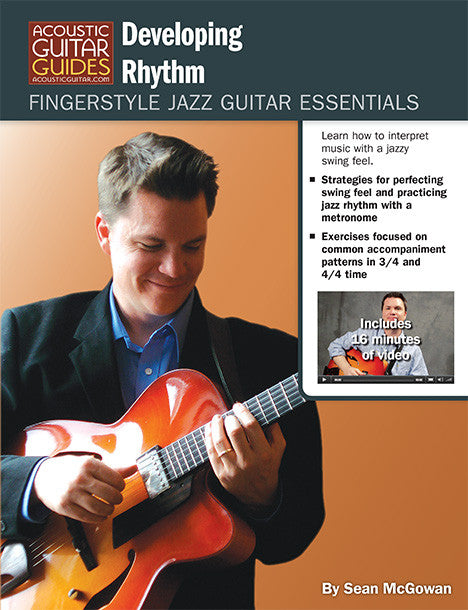Keeping Swing Time with a Metronome
Get stories like this in your inbox (free!)
Learn how to practice jazz rhythms with a metronome.
| Excerpted from Fingerstyle Jazz Guitar Essentials: Developing Rhythm |
Classic jazz rhythm is said to swing, which means that eighth-note subdivisions are based on a triplet feel. In straight time, when a quarter note is subdivided into two eighth notes, each eighth note is given equal rhythmic value of exactly one half of a beat. These are known as straight eighths and are counted “one-and two-and three-and four-and.” When quarter notes are subdivided in jazz, they are usually played as if they were a triplet figure with the first two notes tied together, creating a 12/8 or shuffle feel. Instead of the equal rhythmic value of straight eighths, swing eighths are weighted differently depending on where they fall in the measure, with eighth notes on downbeats essentially lasting twice as long as those on upbeats.
Working with a Metronome
Anyone who has spent time playing with a metronome can probably attest to the sober realization that our rhythm isn’t always as steady as we think it is—but that’s all the more reason to use one regularly! When working on swing feel, first get comfortable with the metronome clicking on beats two and four. Set your metronome to a slower tempo like 108 bpm in 4/4 time, and count along in four. Then drop the tempo in half (54 bpm) and count along so the clicks happen on just the second and fourth beats. If this is awkward at first, just say “two” and “four” along with the clicks, and then say “one” and “three” when you’re ready. With the metronome set as described above, try practicing the simple quarter-note major scale in Example 1. Once that starts to feel easy, try playing a major scale with swung eighth notes (Example 2). Focus on keeping the notes relaxed and fluid—remember that swing eighths should carry a triplet-based feel, in a repeating long-short-long-short pattern. Finally, improvise some solo lines over a chord progression, playing only with the metronome (Example 3).

This is only a small sample of what you'll find in 'Fingerstyle Jazz Guitar Essentials: Developing Rhythm'. Click here to purchase the entire guide for just $3.99!

